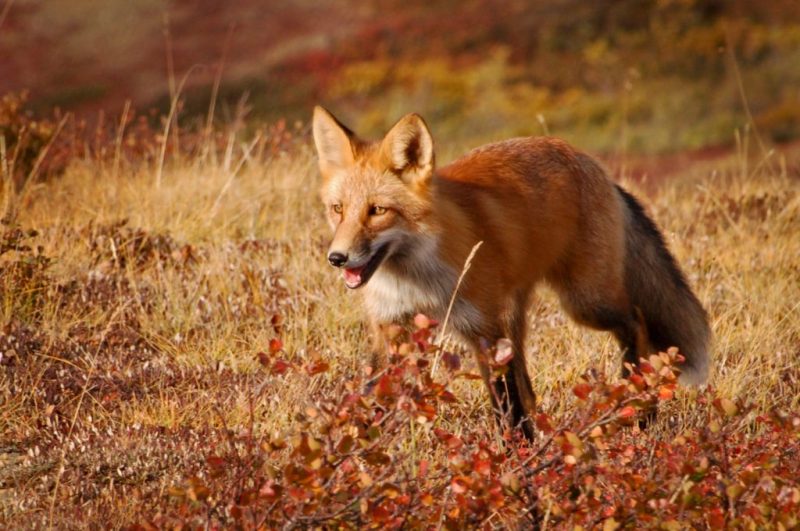Foxes have long been symbols of cunning and adaptability in folklore and popular culture. In Illinois, these elusive creatures have thrived across diverse landscapes, from rural woodlands to urban neighborhoods. Despite their common presence, there are surprising truths about foxes in Illinois that few people know or discuss openly. These revelations touch on their ecology, behavior, challenges, and the complex relationship between foxes and human communities.
For many Illinois residents, foxes might appear as charming or mysterious animals seen darting through the twilight or rustling in suburban yards. However, beneath this seemingly familiar exterior lies a story marked by environmental pressures, surprising adaptability, and sometimes conflict with humans and other wildlife. The truth about foxes in Illinois goes beyond the cute images and runs deeper into ecological, cultural, and conservation issues that deserve attention.
This article uncovers these less-known aspects of fox life in Illinois. From their secretive habits and urban adaptations to threats they face and their roles in the ecosystem, we will explore the realities that shape fox populations today. Understanding these factors not only enriches our appreciation for foxes but also highlights broader themes about wildlife conservation and coexistence in a rapidly changing world.
The Diverse Fox Species of Illinois

Illinois is home primarily to two species of foxes: the red fox (Vulpes vulpes) and the gray fox (Urocyon cinereoargenteus). While both species share some similarities, they differ in habitat preferences, behavior, and ecological roles.
The red fox is more widely recognized due to its striking reddish coat and bushy tail. This species favors open fields, farmlands, and forest edges. It has adapted well to suburban and even urban environments, often seen scavenging near human dwellings or parks.
In contrast, the gray fox tends to inhabit denser forests and woodlands. Its coat is a mixture of gray, black, and reddish hues, and it possesses a unique ability among canids to climb trees, using this skill to escape predators or reach food.
Both species play vital roles in Illinois ecosystems, helping control populations of rodents and insects, and acting as prey for larger predators. However, despite their presence, there is much about their behavior and challenges that remains under the radar for the general public.
Urban Foxes: Adaptation or Survival Challenge?
One of the most surprising truths about foxes in Illinois is their growing presence in urban and suburban areas. Over the past several decades, foxes have increasingly adapted to living close to human populations. This trend highlights their remarkable flexibility but also exposes them to new risks.
Urban foxes have learned to exploit food sources provided unintentionally by humans—garbage, pet food left outside, rodents attracted to human settlements, and even intentional feeding. This has allowed fox populations to expand into neighborhoods and city parks, where they often remain unnoticed due to their nocturnal habits.
However, this urban adaptation is a double-edged sword. While access to food may be easier, foxes face dangers such as vehicle traffic, poisoning from rodenticides, diseases like mange and rabies, and conflicts with pets and humans. Many urban residents do not realize these risks, and misunderstandings can lead to unnecessary fear or mistreatment of foxes.
The presence of foxes in cities also raises questions about how humans coexist with wildlife. Foxes can act as natural pest controllers, reducing populations of rats and other vermin. Yet, their scavenging habits sometimes bring them into conflict with people. Educating the public about safe coexistence practices is essential to minimize harm on both sides.
The Hidden Ecological Impact of Foxes
Beyond their immediate interactions with humans, foxes have a profound impact on Illinois ecosystems. Their role as mesopredators (medium-sized predators) shapes the balance of smaller animal populations and influences biodiversity.
Foxes help keep rodent numbers in check, which benefits crops and reduces the spread of diseases carried by rodents. They also prey on insects and occasionally on ground-nesting birds or reptiles. This predation can have cascading effects, promoting healthy ecosystems and preventing any one species from becoming overly dominant.
Interestingly, foxes themselves are prey for larger predators such as coyotes and bobcats, creating a dynamic food web. The interactions among these carnivores influence animal behaviors, population sizes, and even the health of habitats.
One shocking aspect that is less commonly discussed is the foxes’ role in seed dispersal. By consuming fruits and berries, foxes help spread seeds across Illinois’ landscapes, contributing to plant diversity and forest regeneration. This subtle but vital ecological function underscores foxes’ importance beyond just predation.
Challenges Facing Illinois Fox Populations
Despite their adaptability, foxes in Illinois confront a range of threats that jeopardize their long-term survival. Habitat loss remains one of the most significant challenges. Urban sprawl, agricultural expansion, and deforestation reduce available natural areas for foxes to hunt, den, and reproduce.
Another critical threat comes from human-wildlife conflict. Foxes are sometimes seen as pests, blamed for predation on poultry, pets, or game species. This perception can lead to trapping, poisoning, or shooting, often without full understanding of the ecological consequences.
Disease outbreaks, especially mange, can devastate local fox populations. Mange, caused by parasitic mites, leads to hair loss, skin infections, and weakened immune systems. While mange occurs naturally in wild fox populations, dense urban fox communities can experience rapid spread, amplifying its impact.
Road mortality also takes a heavy toll. Foxes frequently cross busy roads, and many succumb to vehicle collisions. These deaths reduce local populations and disrupt family groups.
Furthermore, exposure to rodenticides and other chemicals used in pest control can poison foxes indirectly. As foxes consume contaminated rodents, toxins accumulate in their systems, leading to illness or death.
The Cultural and Symbolic Significance of Foxes in Illinois
Foxes have captivated human imagination for centuries, and in Illinois, they hold a special place in cultural narratives. Native American tribes revered foxes as symbols of wisdom, cunning, and adaptability. Stories and legends often feature foxes as clever tricksters or protectors.
In more recent times, foxes have become mascots, symbols of rural life, and subjects of art and literature. Their elusive nature and striking appearance inspire photographers, naturalists, and outdoor enthusiasts.
However, this cultural admiration sometimes clashes with practical concerns. Farmers and homeowners may regard foxes as nuisances, while others celebrate them as part of the natural heritage. Bridging this gap requires respectful dialogue, education, and community engagement.
Understanding foxes’ symbolic roles can foster empathy and motivate conservation efforts. When people see foxes as more than just wild animals—as creatures with stories, importance, and rights—they become more likely to support protective measures.
Conservation and Management: What is Being Done?
Illinois has implemented various conservation and wildlife management strategies aimed at balancing fox populations with human interests. State agencies monitor fox numbers through field surveys, public reporting, and scientific research.
Habitat conservation programs work to preserve woodlands, wetlands, and open spaces that foxes rely on. Protecting these areas benefits many species beyond foxes, supporting overall biodiversity.
Education campaigns encourage residents to secure garbage, avoid feeding wildlife, and report sick or injured foxes to authorities. These initiatives reduce human-wildlife conflicts and promote safer coexistence.
Wildlife rehabilitators and veterinarians provide care for injured or diseased foxes, helping to sustain populations. Meanwhile, regulations on trapping and hunting are designed to prevent overharvesting and ensure ethical practices.
Still, challenges remain. Funding limitations, public misconceptions, and ongoing habitat loss require continuous attention. Collaborative efforts between government, conservation groups, and communities are essential to secure a future for Illinois foxes.
Unexpected Facts About Fox Behavior in Illinois
One of the most shocking truths is how foxes have developed surprising behaviors in response to Illinois’ changing environments. For instance, urban foxes exhibit altered activity patterns, becoming more nocturnal to avoid human encounters.
Foxes have also been observed using human structures such as culverts, abandoned buildings, and even storm drains as denning sites. This adaptation reflects their resourcefulness but also raises concerns about exposure to hazards.
Another fascinating behavior involves fox communication. Illinois foxes use a complex range of vocalizations, body postures, and scent markings to establish territories and social hierarchies. Many of these signals go unnoticed by casual observers but are crucial to their survival.
Moreover, foxes demonstrate playful behavior, especially among juveniles. Play fights, chasing, and mock stalking help young foxes develop hunting skills and social bonds.
These behaviors highlight fox intelligence and adaptability, underscoring why they have persisted in Illinois despite numerous pressures.
The Role of Citizen Science and Public Engagement
In recent years, citizen science has become a valuable tool in studying foxes in Illinois. Local residents, hikers, photographers, and wildlife enthusiasts contribute observations, photos, and data through online platforms and community programs.
These grassroots efforts help fill knowledge gaps about fox distribution, population trends, and behavior. They also foster a sense of stewardship and connection between people and wildlife.
Public engagement initiatives often include workshops, educational events, and volunteer opportunities that teach safe wildlife observation and promote coexistence.
By involving the community, these programs empower individuals to make informed decisions and participate actively in conservation.
The Future of Foxes in Illinois: Hope Amid Challenges
Looking ahead, the future of foxes in Illinois depends on collective actions addressing habitat preservation, human-wildlife coexistence, and disease management. Advances in wildlife research will continue to reveal more about fox ecology and responses to environmental changes.
Technological tools such as GPS tracking, remote cameras, and genetic analysis enhance our understanding and ability to protect fox populations effectively.
Growing urbanization and climate change pose ongoing threats, but proactive planning can mitigate impacts. Incorporating wildlife corridors, green spaces, and thoughtful development helps maintain habitats.
Education and cultural appreciation will remain key. As more people recognize foxes’ ecological and symbolic importance, support for their protection can grow stronger.
Ultimately, foxes in Illinois represent resilience and adaptability—a testament to nature’s ability to persist in the face of change. By uncovering the shocking truths about these remarkable animals, we deepen our responsibility to safeguard their future.
FAQs About Foxes in Illinois
What types of foxes live in Illinois?
Illinois is home to red foxes and gray foxes, each with distinct habitats and behaviors.
How do foxes adapt to urban environments?
Foxes exploit food sources from humans and use urban structures for shelter, often becoming more nocturnal to avoid people.
Are foxes dangerous to pets?
Foxes generally avoid humans and pets, but they may occasionally prey on small animals like rabbits or poultry.
How can people coexist safely with foxes?
Secure trash, avoid feeding wildlife, and supervise pets to minimize conflicts.
What threats do foxes face in Illinois?
Habitat loss, disease, vehicle collisions, and human conflicts are major challenges.






